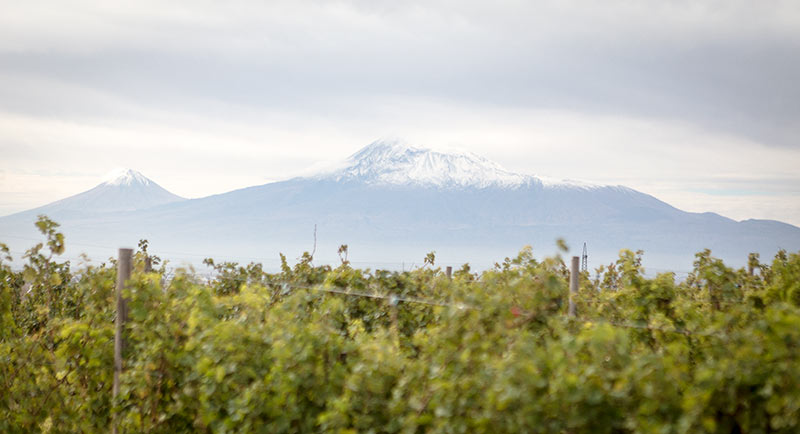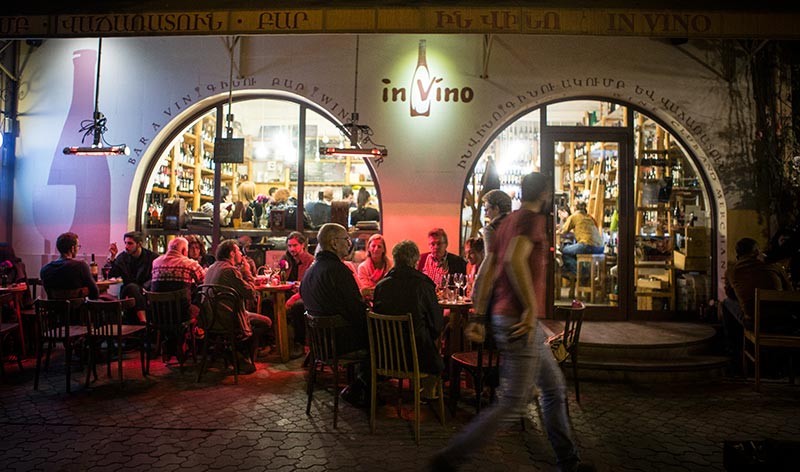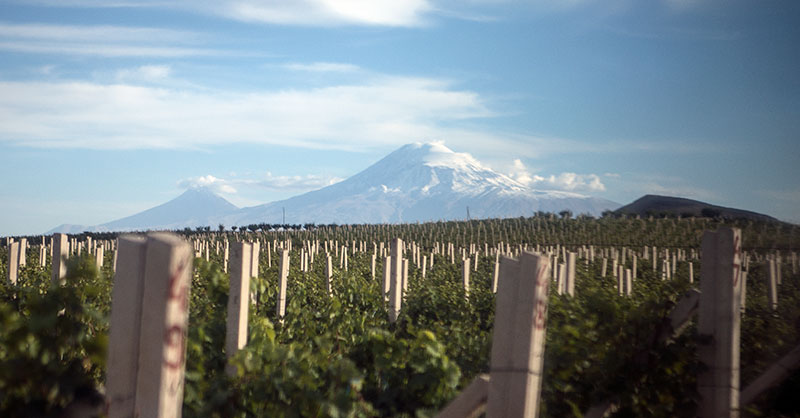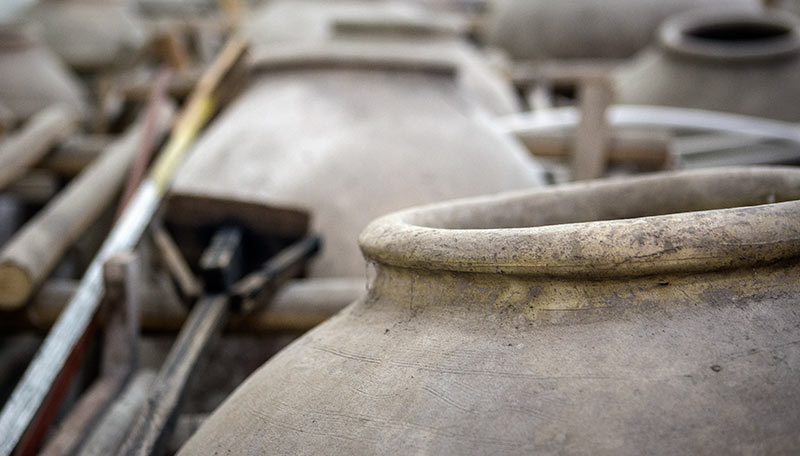Going on a trip to experience Armenian wine, thanks to the Vine & Wine Foundation isn’t really complete without a stop to the Areni-1 cave complex. This natural cave right next to the village of Areni is currently believed to be the oldest place in the world where wine has been produced, dating to about 4,100BCE meaning that it’s over 6,000 years old.
“Wait!” you might have just said without saying, “Doesn’t Georgia lay claim to this ‘oldest wine’ thing with 8,000 years?” Yes, but this is where it gets confusing and why anyone wanting to say, “We made wine here first!” is opening up a can of worms as we know that it’s the Caucasus region as a whole where the wine we know came from but it could be that someday, in Northern Iran or Eastern Turkey we might even find an older spot than any found to date.
To clarify, it works like this: the Georgians, at the Kvemo Kartli site (which is very close to the Armenian border) found residue traces of wine that have been dated to 6,000BCE. This shows proof that wine was made 8,000 years ago, but it can’t be stated as absolute fact that it was made there. The Areni site in Armenia is actually an entire complex where they uncovered all the full workings of an actual cellar that had been preserved due to the roof of the cave collapsing. So one spot is the oldest trace of wine and the other is the oldest spot where wine was made.
If you don’t want to remember all of this, just stick to the adage that I prefer which is: wine has been with us as long as taxes and prostitution. Come to think of it, it might have even been the cause of both…
At this site, they began excavations in 2007 and finished them in 2010 unearthing a fully-functional wine cellar, not to mention the oldest leather shoe in the world. The cellar is an interesting site to see with various fermentation vessels and tanks. It’s quite easy to see how they went about their winemaking business in those days and it doesn’t really vary all that much from what we do today with a fermentation tank and then storage of the wine.
Of course today you’re not going to find bits of human sacrifice in the wine containers of today. That part was a bit gnarly but so it went in ancient times. Of course they must have thought the adding blood to the wine blessed it as the resulting wine would have been a great deal clearer than others due to blood being a fining aging that clumps up all the particulate bits in normal wine. These days we use egg whites or other chemicals which undoubtedly those, 6,000 years in the future will find to be primitive and crude because they’ll have powdered laser beams or some kind of crazy future shit.
In case you’d like to drop in, it’s not hard to find. In fact it’s right off the road by the village. The tricky part is that you can go in unguided–thankfully. I was lucky enough to have Boris Gasparyan accompany my group as he’s the original guy who started digging there on what he basically says is a hunch that panned out. While we listened to him, we weren’t alone as many other groups came and went, kicking up the dust and clomping through the cave. That part was a bit worrying to me as in this cave we have a site of untold cultural heritage and yet countless people come through it often. I can only hope they drop down the numbers a bit over time.
Definitely an interesting stop and it afforded us the ability to swing through the annual Areni Wine Fest the same day, which at about two hours from Yerevan, down a rather bumpy road isn’t something you get to do everyday and was just another part of the journey.





ahahahahah :D
Grimms’ fairy tales are bullshit compared to this :D
yes, and in the same place was found trace of coffee, which makes armenia first to make ot))).
Really stupid article!
As I see you’re coming from Georgia, I assume your argument is against the Armenian claim in which case the example you give makes Georgia’s claim weaker actually. The region as a whole was where wine was originally from.
Thank you dear Miquel Hudin for speaking the truth :)